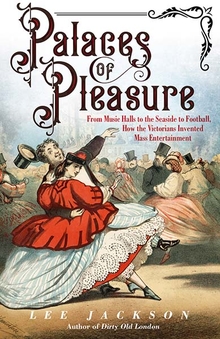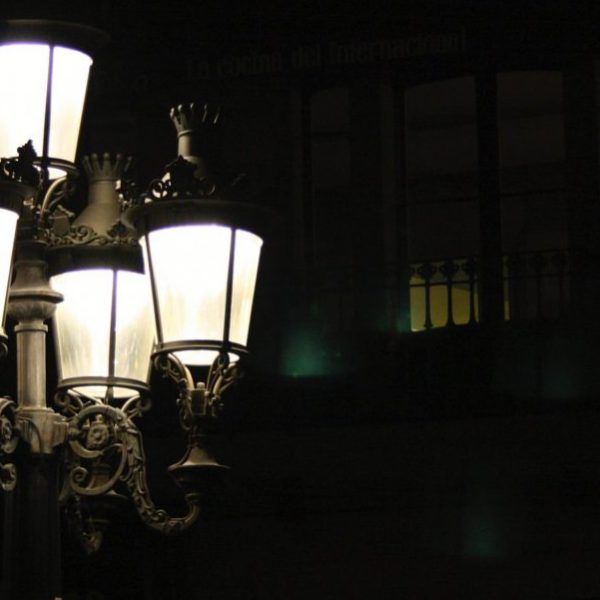From House Telegraphs to Mobile Phones
Lee Jackson—
In December 1858, Punch, the satirical magazine, imagined the next stage in the nineteenth century information revolution: the “house telegraph.” With such a device, one could be both at home and yet in constant telegraphic contact with the wider world. But was this really a good idea? A gentleman might relish, say, playing the stock market from the comfort of his armchair, but not a “perpetual tête-à-tête” with tradesmen and creditors. Worse still, whenever he left the house to go to work, he could always be contacted by his wife! The anonymous author put it rather eloquently: “Solitude would become impossible . . . Every bore’s finger would be always on one’s button; every intruder’s hand on one’s knocker; every good-natured friend’s lips in one’s ear.”
We are now living this prescient satirist’s nightmare; except that the house telegraph has become the personal telegraph: the mobile phone and its various “social” apps. The prospect of a house telegraph, in fact, would not have seemed altogether fanciful in 1858. Earlier in the same year, the world had been mesmerized by the laying of the first, somewhat short-lived, Atlantic telegraph cable (a permanent connection was finally established in 1866). But what really fascinates about this humorous piece in Punch is not a passing insight into the long history of modern communications technology. Rather, we gasp in recognition at the utter modernity of the underlying sentiment, namely the desire to live, even at this early stage, “off the grid.”
This sort of jarring recognition—where we find our ancestors simultaneously familiar and strange—is undoubtedly one of the fundamental joys of researching Victorian social history. Such things, predictably enough, also play rather well online on the modern-day house telegraph. For example, a couple of years ago, I came across an 1840s satirical comment about omnibuses and the so-called “roomy dodge,” or “sitting square”—what we would now describe as manspreading. The accompanying Victorian cartoon and text, embedded in a tweet, spread rapidly round the web. Social media comments, serious and comic, flooded in: “there’s nothing new under the sun!;” “we need to bring these terms back!;” “O for our diminished verbal faculty!” The visual imagery and language of the cartoon both contrasted with our conception of what was considered the quintessentially modern scourge of manspreading—all the newer for the neologism—and yet, simultaneously, seemed to point to an eternal truth about male entitlement and human nature. The result: a rather marvelous instantaneous empathic bridge between past and present.

The social web, I would suggest, for all its faults, offers unprecedented opportunity for generating interest and engagement in history. There are, naturally, some inherent dangers. The meme culture of social media is big on visual impact, not so much on accuracy and citation. Thus, accidental or deliberate misrepresentations of historical images are relatively commonplace, whenever the historic goes viral. A good example—a highly evocative photograph, much reproduced on social media in recent years—purports to show hundreds of books washing down a flooded Parisian street in 1910. It is a magnificently well-framed piece of visual symbolism: a drowning world, a collapsing civilization. Moreover, the location and year are perfectly accurate. The objects in question, however, on closer inspection, are not the contents of a doomed library but, rather more prosaically, loose wooden paving blocks. One might argue this hardly matters—the image itself is still striking; no-one is harmed; and numerous sites debunk the fraud—but, of course, there are also more sinister “historical” memes, such as the images purporting to show or represent so-called “Irish slaves” (a means by which far-right group attempt to downplay the horrors of African slavery). The social web, therefore, arguably the fulfillment of Punch’s vision of bores, intruders and (mildly irritating) good-natured friends, engaged in constant back-and-forth chatter, enables us to make instant and intriguing connections to the past; but it lacks depth, editorial control and judgment. Personal prejudice, malicious actors, outright errors, and the search for ideal images—floating books, not boring bricks—skew our historical perception.
This skewing, however, although it may be worrying, is nothing new. For the internet is not simply a massive encyclopaedia or sourcebook; it is more complex and creative, part of our contemporary culture; and, when we use it, and choose to recirculate one thing or another, we inevitably build upon our previous unedited cultural (mis)understandings. Indeed, our collective understanding of the Victorians has always been skewed, beginning with the Victorians’ own conscious self-fashioning of their legacy, from the moralizing publicity churned out by evangelical reformers to simplistic narratives of rational Whiggish progress, lionizing the (white and male) great and the good. We cannot, moreover, set aside how much we have absorbed the Victorians’ own successful cultural products, loaded with their own biases, from the conventions of nineteenth century novel to the painfully static, silent and serious, formal studio portraits of our great-great grandparents (who would, by the way, surely, be somewhat astonished by the contemporary fashion for a lunatic grin). The job of the historian has always been to try to make sense of these things; and, in a small way, shift others’ perception to something more considered and meaningful.
Web-based memes, of course, are simple things; not great works of scholarship. But, from the humble listicle (“18 Photos Of Victorians Smiling”) to unlikely images of the 1870s roller-skating boom, they hint at a more complex and nuanced history of the nineteenth century—and one within the grasp of the general public. There has certainly never been a perfect undistorted lens through which to view the Victorian past. The stark contrasts and dramatic images of the meme—the chatter on the house telegraph—represent another layer being added to the Victorians’ complex and fascinating legacy.
Lee Jackson is a well-known Victorianist and creator of the preeminent website on Victorian London (victorianlondon.org). He is the author of Dirty Old London: The Victorian Fight Against Filth and Walking Dickens’ London.
Further Reading:

Feature Photo by Robin Worrall on Unsplash




